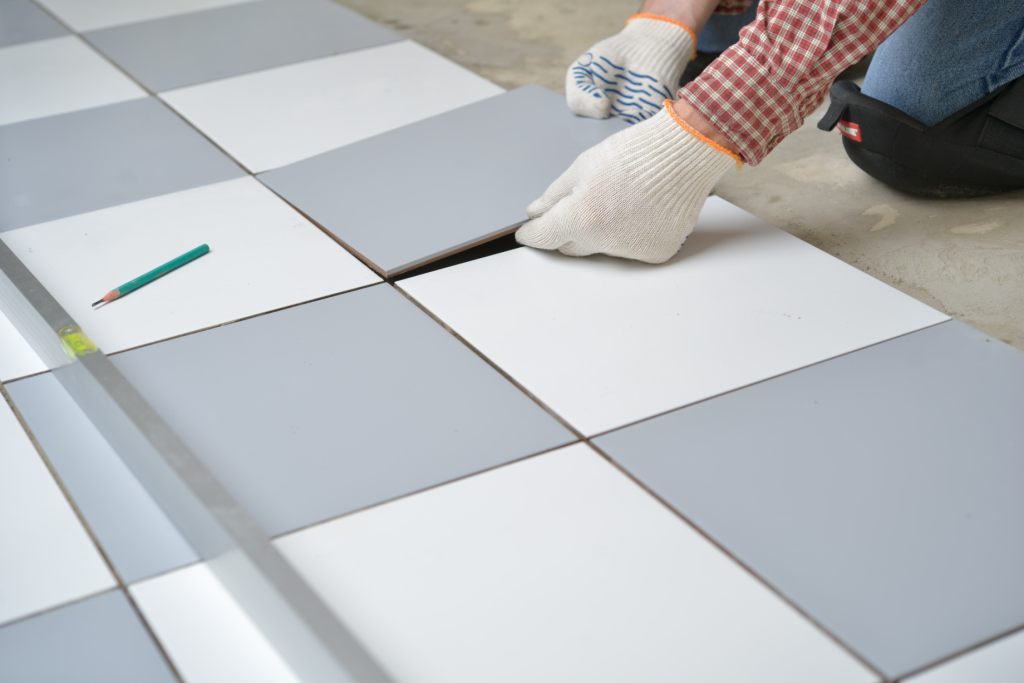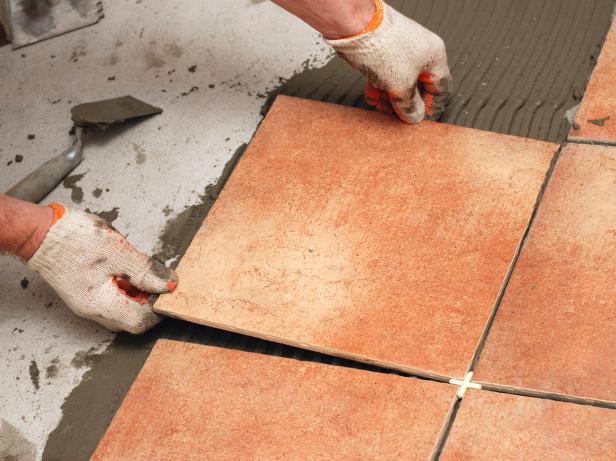Discover the Secrets to Perfect Ceramic Tile Installment Each Time
Attaining remarkable floor tile installment might appear like a difficult job, often leading to aggravation and imperfections that diminish the overall aesthetic. However, mastering the art of ceramic tile installment entails a series of precise steps and techniques that, when carried out correctly, can result in a sleek and smooth finish. From surface area preparation to cement application, each phase plays an important role in the last outcome of your project. By understanding the keys behind each step, you can make certain that your floor tile setup not just satisfies but surpasses your assumptions.
Appropriate Surface Area Preparation
Efficient tile installment hinges substantially on meticulous surface prep work to ensure a perfect result. Before laying ceramic tiles, it is crucial to assess the substratum's problem extensively. The surface has to be clean, dry, and structurally appear to avoid future problems such as loose ceramic tiles or fractured cement. Any existing floor covering product, adhesives, or sealers must be gotten rid of to produce a consistent base for the brand-new ceramic tiles.
To ensure proper adhesion, it is suggested to roughen smooth surfaces via sanding or scarifying. In addition, applying a guide can enhance bonding between the substrate and the floor tile adhesive. Unequal surfaces need to be leveled making use of a self-leveling substance to avoid lippage and make sure a smooth finish.
In addition, inspecting for potential sources of moisture is vital, as excess dampness can lead to mold and mildew growth and damages the tiles gradually. Using a wetness barrier or waterproofing membrane in wet locations like bathrooms or kitchen areas is important to safeguard the tiles from water damage. By diligently preparing the surface prior to floor tile installment, one can develop a long lasting and aesthetically enticing tiled area that will stand the test of time.

Picking the Right Adhesive
Selecting the ideal adhesive is a critical action in guaranteeing the successful installation of tiles. The kind of sticky you select will certainly depend on various variables such as the kind of tile, the substratum product, and the location of the installment. There are different kinds of adhesives available in the market, including thin-set mortar, mastic, and epoxy.

Epoxy adhesives are waterproof and very resilient, making them suitable for areas vulnerable to moisture such as kitchen areas or bathrooms. They are also suitable for setting up glass or metal ceramic tiles. When selecting a sticky, see to it to adhere to the producer's recommendations and consider the details demands of your tile installment job.
Accuracy Reducing Techniques
Utilizing accurate reducing strategies is vital for attaining seamless and exact ceramic tile installments. One of one of the most usual devices used for precision cutting in floor tile installation is the floor tile cutter. Ceramic tile Discover More Here cutters been available in numerous types, consisting of hands-on ceramic tile cutters, electrical wet saws, and handheld ceramic tile cutters. Hands-on tile cutters appropriate for straight cuts on ceramic and porcelain tiles, supplying accurate and clean sides. Electric wet saws, on the other hand, are ideal for cutting more challenging products like stone and thicker ceramic tiles with accuracy and ease. Portable ceramic tile cutters supply portability and benefit for smaller reducing tasks or intricate cuts.
In addition, making use of a tile nipper permits detailed cuts and shaping around barriers or uneven forms. Damp floor tile saws outfitted with ruby blades are exceptional for making bent cuts, intermediaries for components, or complex styles. Furthermore, using tools like tile scribes or glass cutters can aid in racking up and breaking tiles with precision. By grasping these precision cutting strategies, ceramic tile installers can make certain an expert surface and a visually enticing result in their tile tasks.

Cement Application Tips
When transitioning from accuracy reducing strategies to grout application in ceramic tile installment, focus to detail and method is extremely important why not find out more for attaining a remarkable coating. Cement serves not only as a functional aspect that loads the voids in between tiles but likewise plays a considerable function in the general aesthetic of the installment. To make certain an effective grout application, begin by picking the proper type and color of grout that matches the tiles. Mix the cement according to the supplier's directions, guaranteeing a lump-free and smooth uniformity.
When applying cement, operate in tiny areas at a time to stop it from drying out as well rapidly. Make use of a rubber float to push the grout right into the joints at a 45-degree angle, guaranteeing complete protection and condensing the product. Once the grout is used, use a moist sponge to clean up the tiles, seeing to it not to remove grout from the joints. Ultimately, buff the tiles with a completely dry cloth to eliminate any haze and accomplish a sleek finish. Complying with these grout application ideas will certainly result in a properly installed ceramic tile surface that boosts the charm of any kind of room.
Finishing Touches and Upkeep
To complete the tile installation project effectively, interest to detail throughout the completing touches and routine maintenance is essential. After the grout has actually dried out and the tiles are firmly in location, the final steps entail making certain that all edges are appropriately sealed.
Routine maintenance is key to preserving the elegance and performance of your tiled surfaces. A simple regimen of sweeping or vacuuming followed by wiping with a gentle cleanser can help maintain your tiles looking pristine (tile installation austin). For locations that are frequently revealed to wetness, such as kitchen areas or restrooms, regular resealing of grout lines is suggested to stop mold and mold growth
Final Thought
To conclude, achieving best floor tile installation every single time needs focus to information and proper methods. By focusing on surface area prep work, selecting the appropriate adhesive, making use of accuracy reducing methods, applying grout very carefully, and learn the facts here now finishing with focus to detail, you can make sure a professional-looking outcome. Remember to follow these actions and preserve your floor tiles on a regular basis to extend their life expectancy and keep them looking their finest.
One of the most usual devices utilized for accuracy cutting in floor tile setup is the ceramic tile cutter. Ceramic tile cutters come in different types, including hands-on floor tile cutters, electrical wet saws, and handheld ceramic tile cutters. Hand-operated tile cutters are suitable for straight cuts on ceramic and porcelain tiles, providing clean and accurate edges. Additionally, utilizing tools like tile scribes or glass cutters can help in scoring and snapping tiles with precision. By mastering these precision cutting techniques, ceramic tile installers can make sure an expert finish and a visually enticing outcome in their ceramic tile projects.